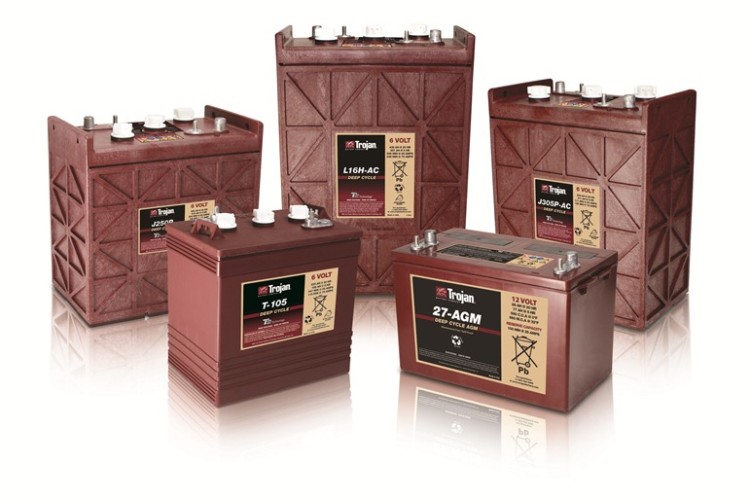According to leading battery manufacturer Trojan, deep-cycle batteries, whether flooded, AGM (absorbed glass mat) or gel, are the best choice for operating battery-powered aerial work platforms because they are optimised for the deep discharge that is characteristic of the operation of these machines.
Trojan supplies many aerial work platform manufacturers. Director Brad Bisaillon says: “Deep-cycle flooded, AGM and gel batteries are engineered to provide rugged durability and performance for use in a variety of AWP and access applications.
“While flooded batteries are the most economical, they do require watering to ensure they operate at peak performance levels and sustain their rated life cycle. AGM and gel batteries do not require watering. However, they are more expensive than flooded models," says Bisaillon.
He says that single-point watering systems have been developed to simplify the process of watering deep-cycle flooded batteries. “These systems take the mess and guesswork out of the chore of watering batteries.” It also is important to remember, he says, that a battery is only as good as the maintenance it receives. Proper maintenance of deep-cycle batteries will provide maximum performance and longer life extending your overall equipment runtimes. Following these simple steps will maximise battery life, Bisaillon says.
Safety
Whether handling flooded lead acid (FLA) or valve regulated lead acid (VRLA), such as AGM or gel, batteries:

- Always wear protective clothing, safety glasses and gloves when handling and/or performing battery maintenance
- Never add acid to a battery
- Keep batteries clean and dry
- Keep sparks, flames and cigarettes away from batteries
- Charge only in well ventilated areas
- Skin contact with electrolyte should be avoided
- Always use insulated tools
Charging
- Charge after each use and follow the manufacturer’s charging instructions
- Before charging, ensure the electrolyte level is above the plates in flooded batteries
- Tighten vent caps before charging
- Do not interrupt a charge cycle
- Never charge a frozen battery
Watering (flooded batteries only)
- Add water only after fully charging the battery (unless plates are exposed)
- Check with the manufacturer regarding proper electrolyte fill levels
- Never allow the electrolyte level to fall below the plates
- Use distilled water
Cleaning
- Clean battery terminals and cable lugs regularly with a solution of one cup of baking soda and one gallon of water using a wire brush. It is imperative to properly maintain the entire connection in a flooded attery because corrosion at either end of the connection can cause high resistance and potential battery failure. Rinse with water and dry.
- Thinly coat all connections with anti-corrosion spray or silicone gel to resist corrosion
Torque
- Tighten all wiring connections according to the manufacturer’s specifications
- Do not over-tighten – this can result in post breakage
- Avoid under-tightening – this can result in post meltdown
- Make sure there is good contact with the terminals
Equalising (flooded batteries only)
- Connect battery to charger, set to equalise mode, and start the charge cycle
- Take voltage readings every hour
- Equalisation is complete when voltage no longer rises
- If charger does not have an equalisation setting call the battery manufacturer’s technical support staff to determine setting
Storage
- Completely charge batteries before storing and monitor every six weeks while in storage
- Batteries gradually self-discharge during storage. AGM batteries self-discharge at a much slower rate than flooded batteries. Check voltage every 4-6 weeks. Stored batteries should be given a boost charge when they are at 70% state of charge or less.
- Store batteries in a cool, dry location avoiding areas where freezing temperatures are expected
- Keep batteries fully charged to prevent freezing
- When batteries are taken out of storage, recharge them before use
- Avoid direct exposure to heat sources, such as radiators or heaters
Got a story? Email news@theconstructionindex.co.uk
.png)


